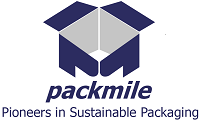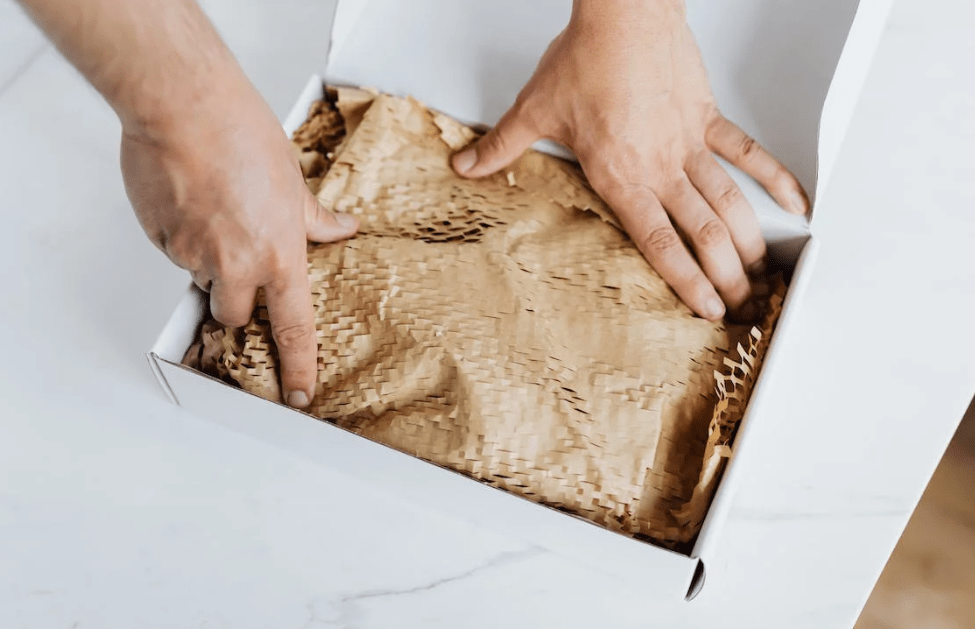The packing industry can be very complicated. There are two primary options for securing your breakables: traditional bubble wrap and its environmentally friendly substitute, paper bubble wrap (also known as bubble packing paper). They both provide answers, but which is best for you? This thorough guide explores the benefits and drawbacks of each option to assist you in selecting the best choice for your packing requirements.
Advantages of Paper Bubble Wrap
1. Lightweight and Space-Saving
The fact that paper bubble wrap is lightweight is one of its main benefits. Bubble wrapping paper is a lighter option than standard bubble wrap, which may significantly increase the weight of goods. This lowers shipment costs and facilitates handling for shippers and recipients alike. Paper bubble wrap also has a reduced profile, which makes it possible to use storage space more effectively. This is especially advantageous for companies that have limited storage space.
2. Natural Look
Compared to its plastic equivalent, bubble wrapping paper gives packages a more organic appearance. Customers who care about the environment will find its earthy tones and texture appealing as they add a little eco-friendliness to packages. They can enjoy a more satisfying unboxing experience when things are presented with a more natural appearance.
3. No Glue Requirements
In contrast to conventional bubble wrap, which frequently needs sticky tape to keep wraps around objects secure, bubble packing paper usually has self-sealing mechanisms or interlocking tabs. This simplifies the packaging process and uses less material by eliminating the need for extra tape or adhesive. Paper bubble wrap, therefore, provides a simpler, more environmentally responsible way to package.
4. All-Round Protection
Paper bubble wraps effectively insulate and protect delicate products from impact and vibrations while in transportation. Its multi-layered design equally distributes pressure and absorbs shock, lowering the possibility of damaged packaged products.
Advantages of Traditional Bubble Wrap
1. Weather Resistant
Traditional bubble wrap has a long-lasting benefit in that it is weatherproof. Plastic bubble wrap retains its protective qualities in various environmental circumstances, unlike paper bubble wrap, which may become ineffective when exposed to moisture or humidity. This qualifies it for storage or long-distance shipping in outdoor settings where exposure to moisture or rain is an issue.
2. Available in Different Sizes
Traditional bubble wrap is available in various shapes and sizes, giving packaging applications more options. Bubble wrap comes in variable sizes for small devices or massive furniture pieces to accommodate different needs. Because of its adaptability, goods of all sizes and forms can be sufficiently safeguarded while in transit, reducing the possibility of breakage or damage.
3. Customizable
Unmatched customizability is possible with plastic bubble wrap, enabling customers to modify the packaging to meet unique needs. The dimensions and thickness of the bubbles, as well as the inclusion of features like UV protection or anti-static qualities, allow classic bubble wrap to meet the specific requirements of various markets and uses. From heavy machinery to sensitive electronics, this degree of personalization guarantees the best possible protection for a wide range of products.
4. Excellent Cushioning
The outstanding cushioning qualities of conventional bubble wrap are one of the leading causes of its widespread use. As shock absorbers, the air-filled bubbles diffuse impact energy and shield delicate goods from harm while in transportation. Bubble wrap’s reputation as a dependable packaging solution across industries is attributed to its exceptional cushioning, which guarantees that even the most fragile products arrive at their destination undamaged.
Paper vs Traditional Bubble Wrap: A Detailed Comparison
Environmental Impact
The comparison of bubble wrapping paper and regular bubble wrap should consider the environment. Polyethylene, the raw material used to make plastic bubble wrap, comes from non-renewable fossil fuels and is well-known for contributing to pollution and marine debris. However, paper bubble wrap is a more environmentally responsible option because it is biodegradable and frequently created from recycled materials. Although there are environmental consequences associated with both materials, paper bubble wrap is a more environmentally friendly option for ethical customers and businesses.
Paper bubble wrap has a lower carbon footprint than standard bubble wrap since its production method uses less water and energy. Paper bubble wrap uses renewable energy sources like solar or wind power to increase environmental friendliness.
Protective Qualities
Although they use different approaches, paper, and conventional bubble wrap work well at protecting breakable objects. Paper bubble wrap provides dependable protection against impact and vibrations because of its multilayer design and interlocking tabs. The air-filled bubbles in traditional bubble wrap act as a cushioning barrier, absorbing shocks and preventing damage to packaged products. The choice may rely on the particular requirements of the packaged objects and the desired level of environmental responsibility, even if both materials provide efficient protection.
Paper bubble wrap is preferred for delicate fabrics or leather products that need to breathe or absorb moisture. Furthermore, the natural strands of paper bubble wrap give another layer of insulation, shielding objects from temperature changes during transit.
Cost Considerations
Regarding bubble wrap costs, traditional bubble wrap tends to be less expensive than paper bubble wrap. However, when long-term factors like the environmental impact and shipping costs are considered, this perception might not always be accurate. Even though paper bubble wrap could cost a little more upfront, its low weight can save shipping costs, particularly for large orders or items with dimensional weight pricing.
Businesses using traditional bubble wrap must additionally account for indirect costs like disposal fees, environmental fines, and direct expenditures. Paper bubble wrap allows firms to avoid additional costs associated with waste management and plastic consumption limitations, thus increasing the cost-effectiveness of environmentally friendly packaging.
Customization and Sustainability
Paper bubble wrap is highly valued for its sustainability, even though standard bubble wrap gives more customization options. Ultimately, which option a firm or consumer chooses will rely on their objectives and values. Conventional bubble wrap might be better for people who value product display and personalization. In contrast, paper bubble wrap presents a vital substitute consistent with the principles and dedication of stakeholders concerned about the environment and sustainable packaging options.
Paper bubble wrap’s biodegradability ensures that it can be disposed of responsibly, minimizing its environmental footprint. Additionally, paper bubble wrap is often manufactured using recycled materials, further reducing its environmental impact and supporting circular economy principles.
Ease of Use
Both paper and conventional bubble wrap have benefits in terms of convenience of usage. Interlocking tabs or self-sealing mechanisms are common elements of paper bubble wrap, making packaging easier and not requiring extra tape or adhesive. Traditional bubble wrap is more flexible and easier to handle because it is more pliable, even if it involves tape to secure wraps. The decision between the two ultimately boils down to personal taste and the particulars of the packaging job at hand.
Because it’s more known, traditional bubble wrap might be considered more handy. Still, paper bubble wrap’s eco-friendly characteristics and user-friendly design make it a desirable choice for companies looking for sustainable packaging solutions.
Making the Right Decision With Packmile’s Bubble Wraps
Packmile leads the charge in sustainable packaging, offering eco-friendly alternatives to single-use plastics. Our bubble wraps, including recycled paper options, prioritize environmental responsibility without sacrificing performance. Catering to diverse industries like automobiles and eCommerce, we specialize in green and reusable packaging solutions. With competitive pricing and customizable options, Packmile ensures businesses can protect their products while reducing their carbon footprint. Choose Packmile for packaging that’s as environmentally conscious as it is effective.
FREQUENTLY ASKED QUESTIONS
What are some creative ways to use bubble wrap beyond packing?
Aside from packing, bubble wrap has a variety of creative uses, including insulation for windows, protective padding for furniture during moving, and as a stress relief tool for popping bubbles.
What are the different types of bubble wrap?
Bubble wrap comes in various types, including standard bubble wrap with air-filled bubbles, anti-static bubble wrap for electronics, and cohesive bubble wrap with a self-sealing adhesive layer.
What materials are utilized in bubble wrap production?
Traditional bubble wrap is typically made from polyethylene, a plastic derived from fossil fuels. On the other hand, paper bubble wrap is made from recycled paper or sustainable materials such as kraft paper.
Is bubble wrap recyclable?
While traditional bubble wrap is recyclable in some regions, it's essential to check with local recycling facilities for specific guidelines. Paper bubble wrap, being biodegradable, can often be composted or recycled with other paper products.



Leave A Comment